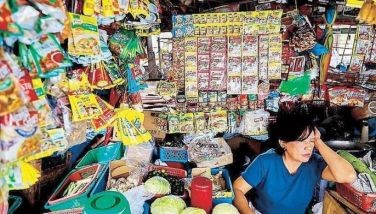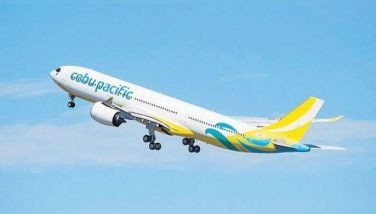BPI sticks to 12-15% lending growth target
MANILA, Philippines - Bank of the Philippine Islands (BPI) has remained cautiously optimistic its target of 12 to 15 percent growth rate in lending could still be achieved for the rest of the year.
BPI president and chief executive officer Aurelio Luis R. Montinola III said most domestic banks are likewise keeping a cautious outlook heading into the second and third quarters of 2012, citing negative factors mostly external in nature.
“The financial stress surrounding the eurozone, especially Greece and Spain, and the tension at the Panatag (Scarborough) Shoal is creating a lot of uncertainties,” Montinola said during a signing agreement yesterday between the International Finance Corp. (IFC) and the Ayala-led universal bank.
In the first three months, BPI lending rose almost 20 percent but initial feedback points to a possible weakening in borrowings in the second quarter.
“We may have to ride out the second quarter,” Montinola said, adding that the bank is now leaning on the lower end of the full year lending forecast.
In its first three months, the bank’s remittance business grew 16 percent, and premiums from its bancassurance business expanded 35 percent.
This as the internal conditions as well as economic fundamentals are strong, including a little over five percent growth in remittances that continues to account for nearly 10 percent of gross domestic product (GDP).
The first quarter GDP growth this year is forecast to expand between 4.5 percent to 4.8 percent.
BPI’s was awarded a $1.2-million (roughly P50.4 million) grant from the G-20 SME Finance Challenge Award along with 14 other awardees out of over 200 entries.
The amount was coursed through the IFC as it has been the partner of BPI in several undertakings. The IFC is the investment arm of the World Bank.
BPI assistant vice president and head of specialized lending unit & sustainable energy finance Nanette A. Biason said the amount would be shared with BPI Family Savings Bank, BPI Leasing and BPI.
“The target are small and medium enterprises (SMEs) that should result in financial inclusion with an emphasis on green technology,” Biason said.
Specifically, it will be used for: internal capacity building; preparing and orienting the SME lending officers; marketing awareness and green education; develop tools for evaluation; and other technology assistance.
The amount will enhance the P5 billion already raised over the past four years under the Sustainable Economic Fund (SEF). The fund was a product of the collaboration between the IFC and BPI.
The SEF would go to investments towards energy efficiency as well as providing loans for businesses shifting towards energy-efficient products for their operations, such as compact fluorescent lighting (CFL) or LED lighting and energy-efficient chillers that are less ozone-depleting.
It also helped BPI create an environment of energy efficiency within the bank, resulting in savings for the third largest bank in the country.
- Latest
- Trending





























